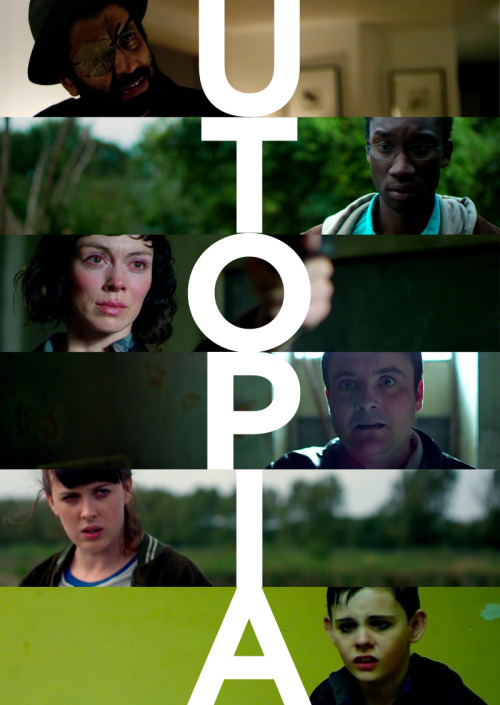The Passion of New Eve: Bisexuality and Fragmentation through Synecdoche
Angela Carter's novel, The Passion of New Eve introduces the reader to a dystopian vision of America. The social upheaval of the 1970's is presented in hyperbole: conflicts surrounding racial and gender equality are boiling over. Rather than describing this compelling vision, The Passion of New Eve rapidly opens with an enormous philosophical assumption. Our narrator, Evelyn, posits:
Our external symbols must always express the life within us with absolute precision; how could they do otherwise, since that life has generated them? Therefore we must not blame our poor symbols if they take forms that seem trivial to us, or absurd, for the symbols themselves have no control over their own fleshly manifestations, however paltry they may be; the nature of our life alone has determined their forms.
A critique of these symbols is a critique of our lives. (6)
Interestingly, Carter presents this formidable claim on semiotics before the reader has a chance to establish the reliability of the narrator; before the narrator is even named (however, Tristessa is notably present). As we discover, Evelyn is far from impartial. Evelyn harbors a great many biases and assumptions (particularly about gender). His assumption regarding the relationship between symbol and life is subject to some challenging throughout the narrative as demonstrated through the conflicts surrounding gender and its presentation. Carter offers a critique of these symbols and, perhaps, a critique of our lives.
Rubenstein claims that Carter often copes with the issue of gender through synecdoche. Carter attempts to “highlight prevailing social constructions of male power and female powerlessness as, literally, extensions of their genitalia in precisely these contexts of gender-specific anxiety” (106). The gender-specific anxiety Rubenstein references are psychoanalytic in nature: castration anxiety for males and penetration anxiety for females (Rubenstein’s own designated category).
In The Passion of New Eve “the female body depends for its construction on the literal dismemberment of the male body… Castration turns a man into a woman: a complete woman, a woman with ‘all the necessary parts’” (Michie 667). Evelyn’s transformation from man to woman is an act of castration. Ironically, castration by a phallic symbol – the knife. The act, however, is more than simple castration. He is transgendered, it seems, even before the operation. He experiences, in same action, the realization of (male) castration anxiety and Rubenstein's penetration anxiety – both penetrated and castrated by the knife.
Metamorphosed by surgery, Eve[lyn]’s new form elicits an autoerotic response. “I was the object of all the unfocused desires that had ever existed in my own head. I had become my own masturbatory fantasy. And – how can I put it- the cock in my head, still, twitched at the sight of myself” (75). As we see, Carter uses synecdoche to represent Eve’s masculine psychological identify (“the cock in my head”).
However, this moment of autoeroticism (and, again, during Eve and Tristessa’s coupling in the desert) suggests something more than lingering masculine identity. Indeed, there is a strong suggestion of bisexuality. Eve is attracted to himself not only because of his external femininity but also because of his internal masculinity. Carter exposes the fallacy of masculine romantic fantasies of femininity – the desire to be mirrored by the female. This desire is most perfectly enacted by the male in drag, explaining Eve’s lifelong occupation with Tristessa, the secret Hollywood transsexual.
Carter represents bisexuality as a union of opposites, which is perhaps problematic. “The figure of the transsexual or bisexual is a kind of mediating figure invoked to reconcile symbolically these polarized positions” (Rubenstein 106). As a mediator, Carter’s transsexual/bisexual seeks to bridge the gap between the harshly defined genders. However, this gap is established by the rigid definitions presented by Carter. The bisexual and the transsexual must operate between these poles. Neither is afforded the status of hermaphrodite, existing simultaneously as doubly gendered. Instead, each must shift from one gender to the other. Tristessa, the least biologically hermaphroditic is, perhaps, the most genuine of the two because of the destabilization caused by her more fluid gender identity. The bisexual, in this sense, is complementary (as in the hermaphrodite myth) but lacking multiplicity. Each character seems to represent a fairly static state of gender – while these categories may change throughout the novel it is rare that we find them dynamic and fluid in any given scene.
Rubenstein is critical of Carter’s definitions of gender: “Femininity/female is equated with passivity, emptiness, abasement, and terrifying vulnerability, or with voracious, engulfing ‘suction’; masculinity/male is characterized by sadism and sexual violence” (116). Indeed, Carter’s representations are so exaggerated (the nihilistic, sadist Zero; the preposterous Mother Goddess) as to almost seem caricatures of historical and mythical gender.
Eve ponders the implications of gender with consideration for his/her experiences and offers little insight. “Masculine and feminine are correlatives which involve one another. I am sure of that – the quality and its negation are locked in necessity. But what the nature of masculine and the nature of feminine might be, whether they involve male and female… that I do not know” (149-150). Carter (or, perhaps only Eve) is unwilling, or unable, to offer us a category of ‘genderlessness’. We must, instead, deal with a conception of gender located between the poles of masculine and feminine rather than a gender constructed entirely independent of the binarism that seems to be the hallmark of Western metaphysics.
Just as Eve lacks a stable identity, Carter defines Tristessa as having “no ontological status, only an iconographic one” (129). She has no essential characteristics that define her existence, rather she is an icon – a suggestion or a concept. However, Eve’s description of Tristessa is the closest we get to a genderless category: “He, she – neither will do for you” (143). Not two pages later Eve abandons notions of Tristessa’s genderlessness. She thinks of him: “He was a mad, old man with long, white hair like Ezekiel” (145).
Both Eve and Tristessa are “an Other, an object constructed by others – as in a mirror or in another’s gaze – not a subject or self” (Rubenstein 111). Carter’s narrative makes it clear that Eve and Tristessa’s identities (indeed, our own) are not self established but are often ultimately derived from the synecdochal signifier of gender: the penis or vagina. Carter’s synecdochal representation of gender is problematic because this method of discourse fragments the individual, turning the subject into an object. Helena Michie describes this usage of synecdoche as a “semiotic fetish” (663). The two possess “composite identit[ies]” (Johnson 43), assembled from the fragments resultant from the imperfect semiotics of gender.
As Other, Eve and Tristessa are denied identity and means of self-knowledge. Eve reflects on their plight: “You and I, who inhabited false shapes, who appeared to one another doubly masked, like an ultimate mystification, were unknown even to ourselves” (136). Interestingly, Eve and Tristessa are not outsiders as long as they can 'pass' as the gender which their external signs suggest. This works far better for Eve because he possesses all of the physical aspects of femininity. However, Tristessa is met with resistance when her male genitals are uncovered.
Instances of active gender transgression in The Passion of New Eve, particularly Tristessa’s transgression, are met with disgust and violence. Western culture requires that individuals choose a stable sexual identity and maintain it for life. “It is still widely believed that homosexuality and the swapping of gender characteristics are somehow ‘errors’ – that is, Foucault says, ‘a manner of acting that is not adequate to reality’” (Johnson 43).
Zero and his harem react with violent reproach when they become aware of Tristessa’s phallus. They respond by forcing Tristessa into a marriage with Eve. Eve and Tristessa’s wedding is of particular interest when analyzing the signifiers of gender identity. Tristessa is dressed in female garb, contradicting his/her gender (as identified by Zero) whereas Eve is dressed as the groom. Although Eve possesses the requisite genitalia for the role of bride, Zero assigns this role to Eve as a means of degrading Tristessa and Eve. Ironically, Eve is likely the member of this couple that has maintained a masculine identity for the greatest period of time (prior to her/his operation). Gender is actively destabilized in this scene as a multiplicity of gender identities is generated: “it was a double wedding – both were the bride, both the groom in this ceremony” (135).
References
Carter, Angela. The Passion of New Eve. London: Virago, 1998.
Johnson, Heather. “Textualizing the double-gendered body: forms of the grotesque in The Passion of New Eve.” Review of Contemporary Fiction. 14.3 (1994): 43.
Michie, Helena. “Partial Women: Synecdoche, Semiosis, and the Fantasy of the Whole.” Poetics Today. 8.3 (1987): 661-674.
Rubenstein, Roberta. “Intersexions: Gender Metamorphosis in Angela Carter's The Passion of New Eve and Louis Gould's A Sea-Change.” Tulsa Studies in Women's Literature. 12.1 (1993): 103-118.
Nick Heling
12/03/2006






